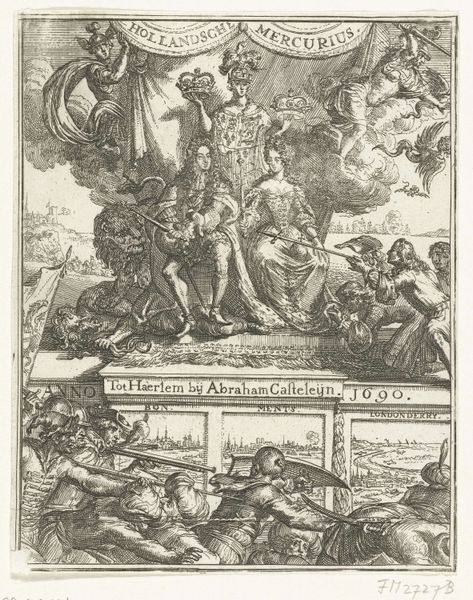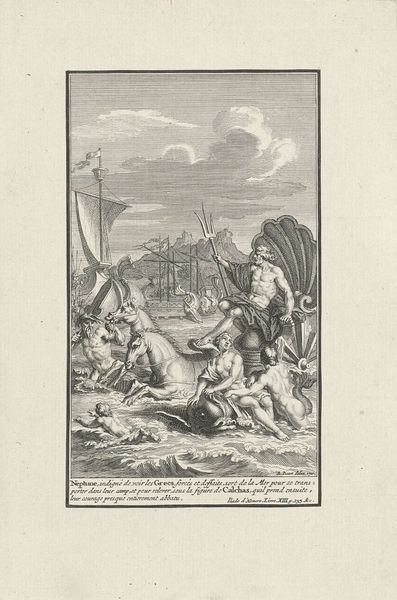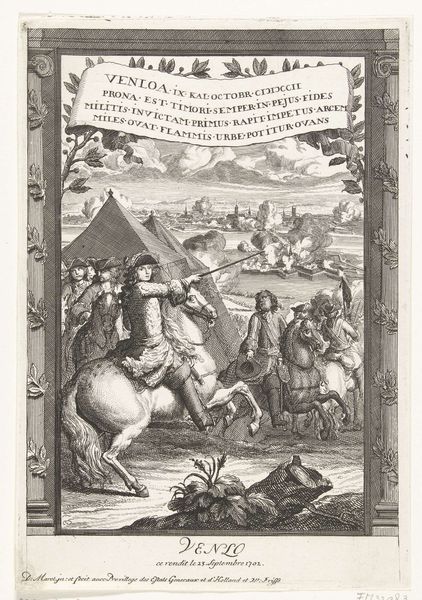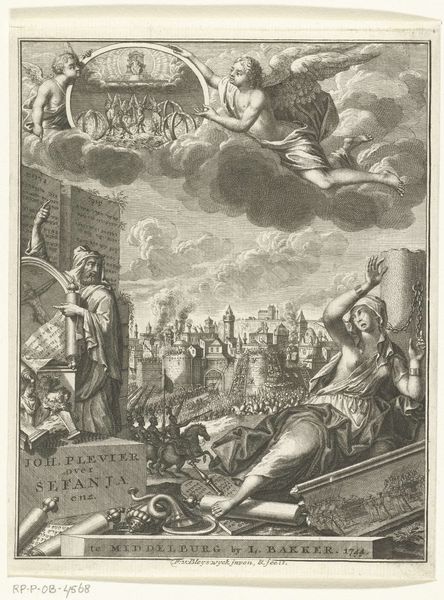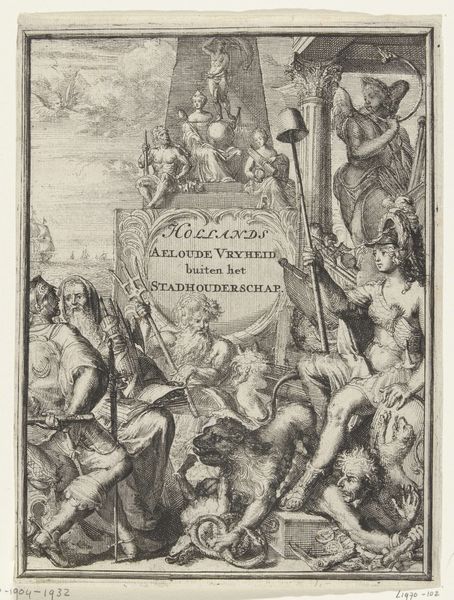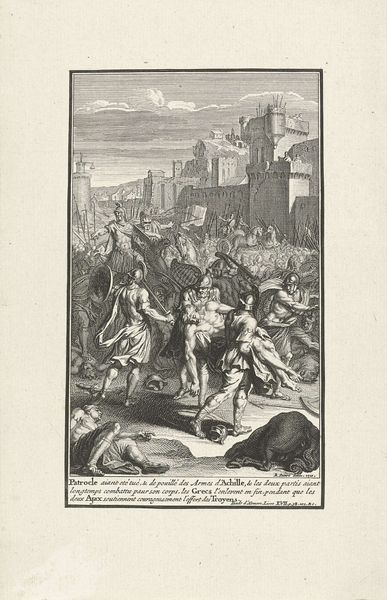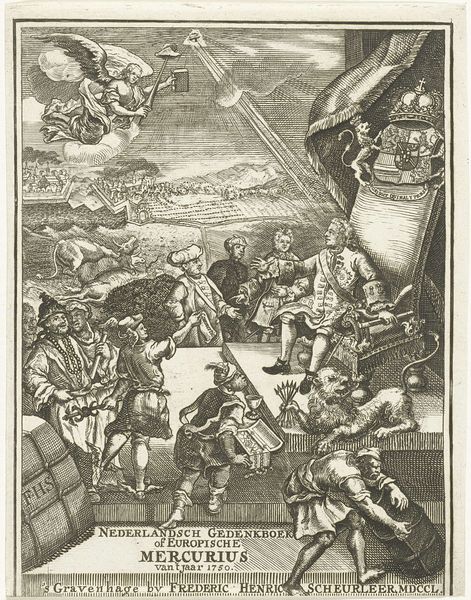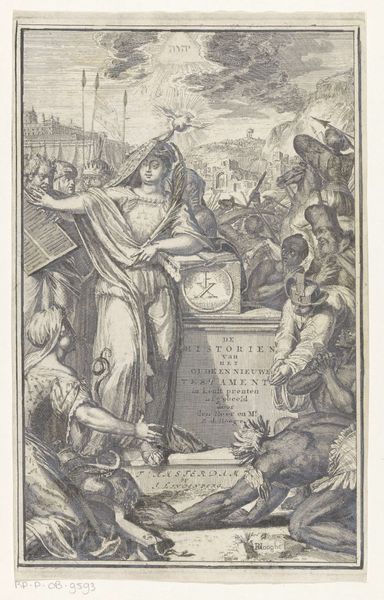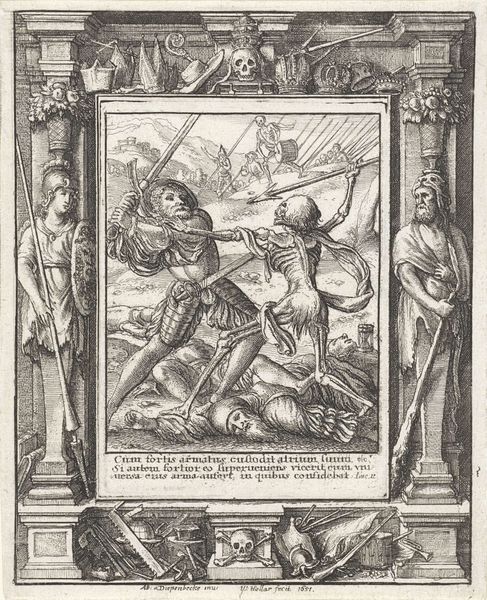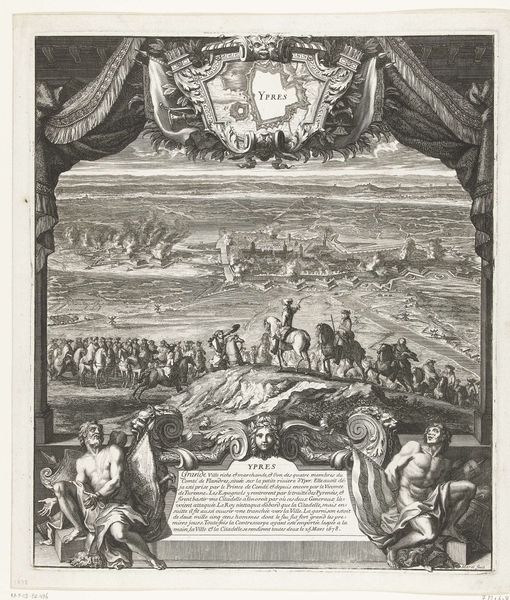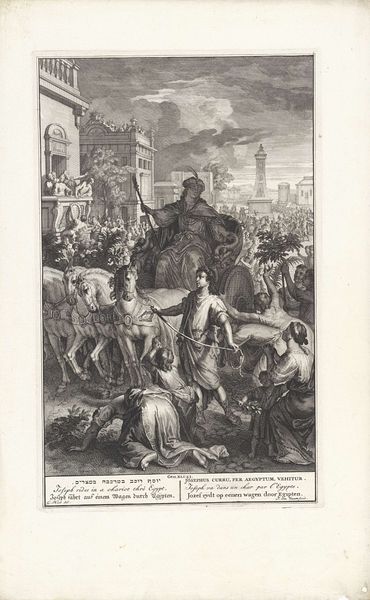
Titelprent voor 'L. Annaeus Florus recensitus & illustratus a Joanne Georgio Grævio' van L. Annaeus Florus 1680
0:00
0:00
print, engraving
#
allegory
#
baroque
# print
#
history-painting
#
engraving
Dimensions: height 162 mm, width 106 mm
Copyright: Rijks Museum: Open Domain
Curator: This intricate engraving, etched by Romeyn de Hooghe around 1680, serves as the title print for ‘L. Annaeus Florus recensitus & illustratus a Joanne Georgio Grævio’. The Rijksmuseum houses this fascinating piece. My first impression is how visually overwhelming the composition is, so many details competing for the viewer’s attention. Editor: Absolutely, the piece feels incredibly busy. It evokes a sense of baroque extravagance and, dare I say, the exhaustion inherent in upholding empires through scholarly means. Is it meant to inspire or to intimidate, do you think? Curator: A superb question. Structurally, we see a hierarchy meticulously laid out: The allegorical figure of Rome sits enthroned above figures from Roman military history and the symbolic representations of defeated nations huddled below the book's title. The composition itself reinforces the rigid social and intellectual order the book champions. Note the details of the engraved lines— the contrast creates both texture and weight. Editor: It's more than order; it’s a display of power through knowledge. We're seeing a visual representation of Roman dominance, bolstered by historical accounts and scholarly interpretations. Look at those defeated figures – bodies contorted in despair and literally crushed under the weight of the title. The piece romanticizes a violent legacy of colonization and oppression, masking it with the veneer of intellectual pursuit. How does this confront or uphold 17th-century Dutch views on empire building? Curator: Fascinating point! This visual encoding invites complex semiotic readings. Consider the symbolic deployment of classical imagery— the fasces, the laurel wreaths, the eagles— each functions as a signifier within a larger system that elevates Rome to a position of almost mythical importance. The technique creates clear and present symbols throughout. Editor: Precisely. And it's impossible to ignore how these symbols would have resonated with the contemporary Dutch audience. The engraving is not merely depicting Roman glory but subtly legitimizing Dutch colonial ambitions by aligning them with a prestigious historical antecedent. By visually equating Amsterdam with Rome, the piece partakes in the imperial imaginary of the time. It reminds us how art is always intertwined with power dynamics. Curator: Agreed, and thank you for illuminating how it resonates to the cultural history it evokes in its complex artistic arrangement. Editor: Indeed. These layers of context allow a deeper understanding of its visual elements and rhetorical aims.
Comments
No comments
Be the first to comment and join the conversation on the ultimate creative platform.

